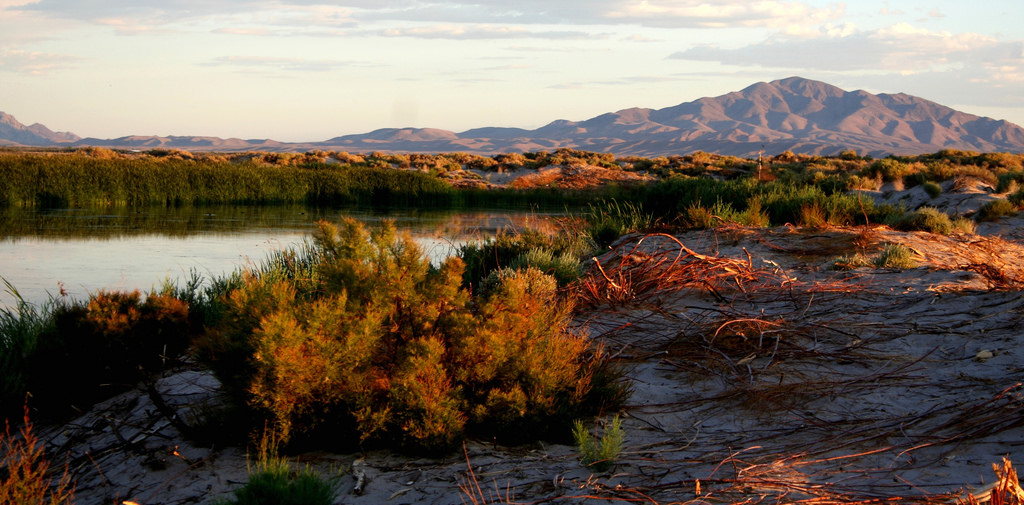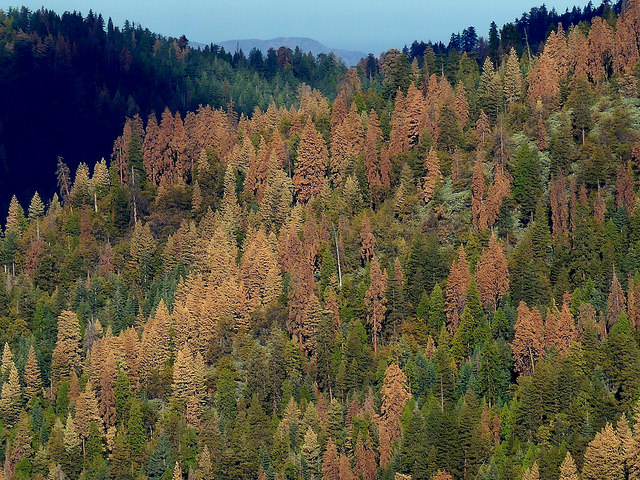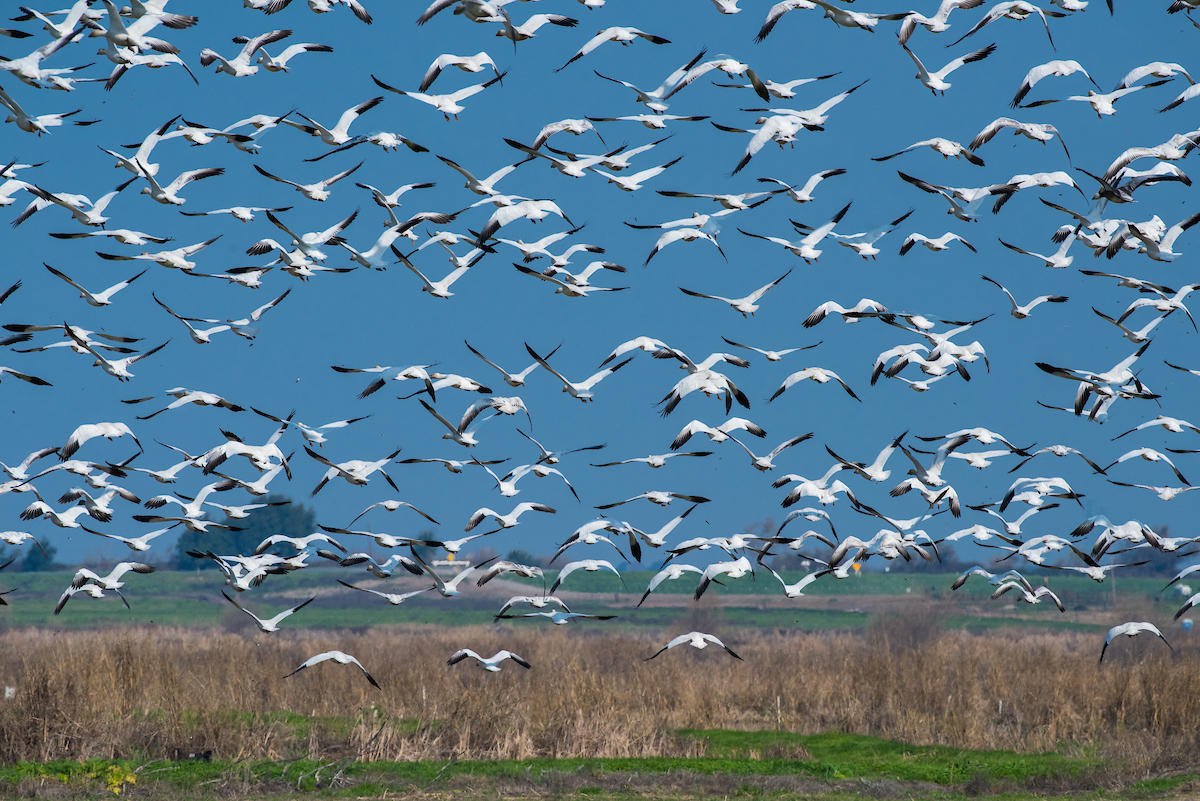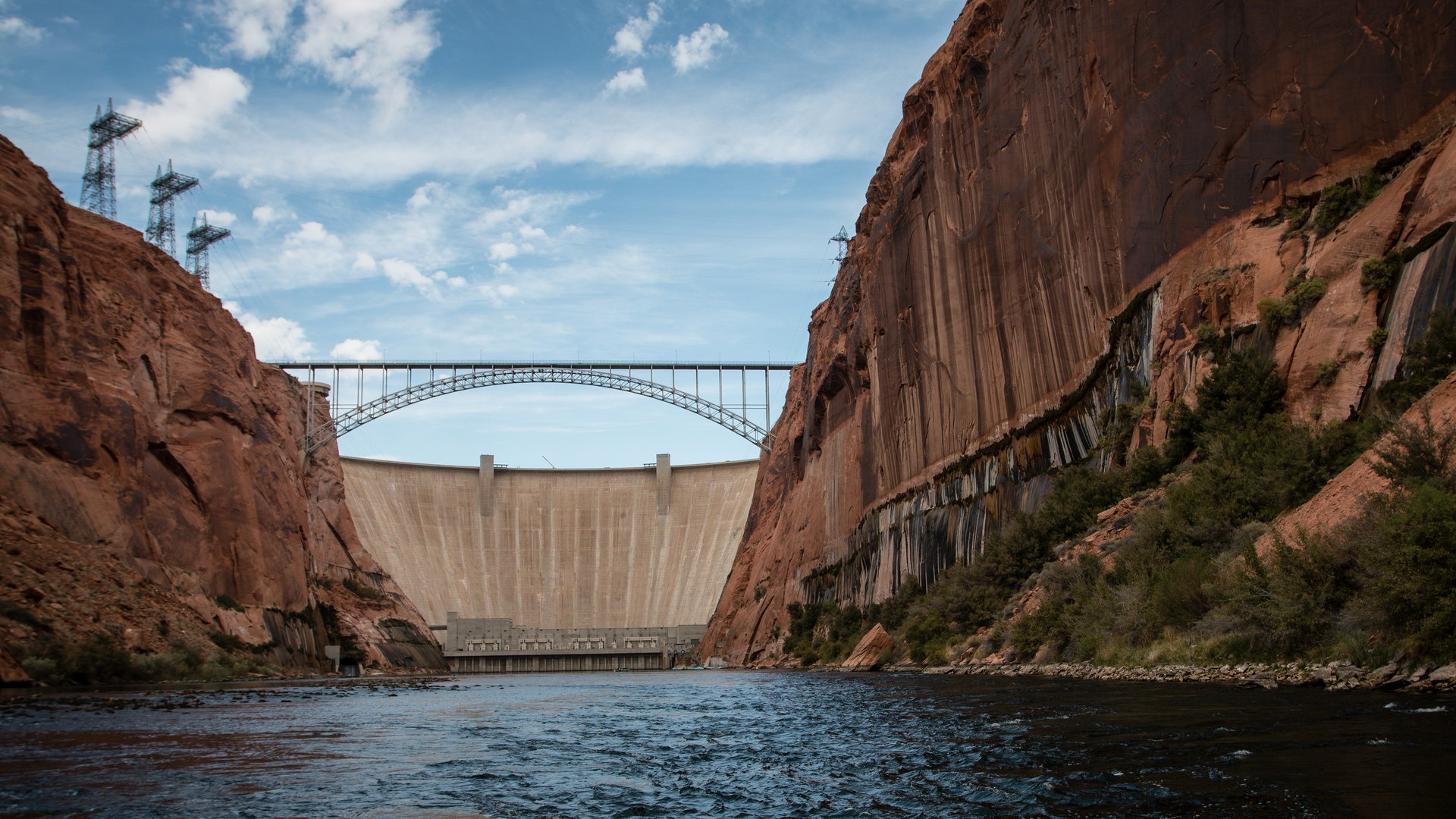In the last few weeks of 2018, the Trump administration set the stage for a big battle over water in the new year. At stake is an important rule that defines which waters are protected under the Clean Water Act. The Trump administration seeks to roll back important protections for wetlands and waterways, which are important to drinking water and wildlife.
This is just one of the upcoming water battles that could serve to define 2019. It’s also poised to be a year of reckoning on the Colorado River, which supplies water to 40 million people and 5.5 million acres of farmland. A long-anticipated multistate agreement is close to completion after an ultimatum from the federal government. And it could also be a landmark year for water management in California, with several key issues coming to a head.
Big things may also happen on the water infrastructure front and in efforts to address clean-water concerns. Of course, underlying many of the water issues is the specter of climate change, which is bringing both severe droughts and floods and exacerbating water-supply problems.
Let’s dive into some of the issues experts say we need to keep an eye on in the coming year.
Clean Water Rule Change
The biggest looming water issue this year has to do with a law passed nearly 50 years ago.
On December 12 the Trump administration unveiled a proposal to redefine the Waters of the U.S. Rule, also known as the Clean Water Rule, which was adopted in 2015 by the Obama administration to set clear guidelines on how certain waterways and wetlands are regulated under the 1972 Clean Water Act. The action came after two Supreme Court rulings in the early 2000s created some uncertainty about what the Clean Water Act protects.
Obama’s rule slightly widened what was protected under the Clean Water Act (much to the chagrin of many industry groups and developers). For example, the 2015 rule included automatic protections for wetlands and ponds that are “within 100 feet or within the 100-year floodplain of a protected waterway,” Vox reporters Brad Plumer and Umair Irfan explained. And they wrote last month, “In the past, tributaries of navigable rivers were evaluated on a case-by-case basis. But under the new rule, they’re automatically protected if they have a bed, a bank and a high-water mark.” Overall the change amounted to clarifying protections for about 3 percent of waterways.
The newly proposed Trump administration rule, however, would swing widely in the other direction, limiting protections to only major waterways, tributaries and adjacent wetlands. As written now, the new rule would strip protections from 18 percent of streams and just over half of the country’s wetlands, but there’s concern the final rule could be even more restrictive.
Industry officials praised the Trump plan. Zippy Duvall, president of the American Farm Bureau Federation, called the Trump administration’s proposal, “The Christmas present of a lifetime!”
Environmental groups had a very different opinion. The loss of protections, they said, threatens drinking water and wildlife, with the western United States poised to be affected most. In Nevada 85 percent of streams would lose protections, as would more than half in New Mexico and Arizona.

“The rollbacks to the Clean Water Act the Trump administration is proposing are the greatest threat to this nation’s waterways in 50 years,” says Dan Estrin, Waterkeeper Alliance general counsel and advocacy director. This industry-supported proposal would “incentivize polluters to move pollution upstream, where they won’t have to worry about federal or citizen enforcement,” he says.
A 60-day public comment period on the proposed regulation is underway. Meanwhile Republicans in the legislature are already attempting to push through their own version of what kind of wetlands and waterways should be protected by the Clean Water Act — in this case, it would only cover permanently “navigable” waters.
It’s not clear what will happen on this front, but however things move forward it will be critically important. “The Waters of the United States law will be tested, implemented, suspended or revoked,” says Peter Gleick, president emeritus of the global water think-tank the Pacific Institute. Expect the debate over the rule change to be contentious and the final product legally contested.
Colorado River Agreement
2019 will be a year of reckoning for the Colorado River. It has to be — both nature and the federal government have issued ultimatums.
First, nature’s part: With the basin in a drought for nearly two decades, the river’s flow has dropped almost 20 percent (human-caused warming is responsible for at about a third of this reduced flow). By 2020 Lake Mead, the largest reservoir in the watershed, could fall low enough to trigger shortages to Arizona, Nevada and eventually California. In 2020 the water users must also begin a massive renegotiation of how the Colorado River is managed and how we prepare for a future with less water — an epic task that needs to be completed by 2026, when the current agreement expires.
The three states have been busy working on a drought contingency plan to slow the decline of Lake Mead, a process that will need to be completed before the larger negotiations begin in 2020. One major snag has come from Arizona, which is trying to resolve in-state disputes.
Things are about to get even more interesting, though. At a recent meeting of Colorado River water users, U.S. Bureau of Reclamation Commissioner Brenda Burman set a deadline of January 31 for the three states to settle their plan or else the federal government will step in, which would be a widely unwelcome scenario.
“This could be very messy,” John Fleck, director of the University of New Mexico’s Water Resources Program, wrote recently on his blog about Colorado River water issues. “It suggests that either voluntarily (through interstate agreement) or imposed by the feds, we’ll have new shortage guidelines in place by 2020 to slow the decline of Lake Mead.”
Even if a new shortage agreement is reached in the next month, Gleick says we’re still likely to see political conflict among basin water users as water levels in Lake Mead continue to fall. It’s not just California, Nevada and Arizona duking things out — the river is also shared with upstream states Wyoming, Colorado, Utah and New Mexico, as well as with Mexico downstream. What happens to the Colorado affects much of the West, including cities like Denver, Phoenix and Los Angeles.
And the drought contingency plan is also only a stopgap measure to give all the water users time to pause the crisis until the elephant in the room needs to be officially addressed: The Colorado River simply doesn’t have enough water for all the claims made to it.
“Now, whether through ignorance or malfeasance, we now have communities that have come to expect that fictionally large supply, and few rules to determine who gets less, and how much,” wrote Fleck.
This year’s work will be a crucial one for setting the stage for these future talks and better understanding the new climate reality.
Climate Change
2018 ended with some momentum on climate action. International climate talks in December at COP24 in Poland limped to a close with an agreement in hand, but one that fails to meet the urgency and scale of the problem.
And while the United States was conspicuously absent from international dealings, more movement to address climate challenges are afoot on the home front, with increasing calls for political action and a Green New Deal.
Significant climate legislation will likely be out of reach with a Republican Senate and White House, but climate change impacts will continue to make a mark, regardless, and could help to motivate more public action and pressure on elected officials and corporations.
“Somewhere in the U.S. we’ll see unprecedented flooding and somewhere else, unprecedented drought, as climate change continues to worsen extreme hydrologic events,” says Gleick. “Temperatures will continue to rise.” And all of this will compound water woes like declining flows in the Colorado River, harmful algal blooms across the country, the vulnerability of our croplands and declining groundwater levels.

“I think that the overall story is that catastrophic times are here,” says Kimery Wiltshire, CEO and director of Carpe Diem West, a nonprofit that tackles water and climate issues. We need to accelerate the pace and scale of restoration to meet our ecological challenges, she says. “Fortunately, there are a number of communities taking smart, positive steps for water resiliency in the face of climate change.”
California’s Grand Bargain
In California several long-term and contentious decisions over future water management will be headline-generating in the coming year, and we could see either compromise or conflict between the state and the Trump administration.
California’s Water Resources Control Board has been working on a plan that would increase the amount of water left in key rivers that drain to the Sacramento-San Joaquin Delta, the linchpin in California’s vast water infrastructure network, to try and protect water quality and wildlife. It’s a move that has made municipal and agricultural water users concerned.

But just before 2018 closed out a new “grand bargain” was beginning to emerge between state agencies, federal agencies, irrigation districts and urban water agencies.
If the deal comes to fruition, “it could be revolutionary” in terms of the region’s water management, says Ellen Hanak, a senior fellow at the Public Policy Institute of California and director of the PPIC Water Policy Center. The parties have committed to hammering out the agreement in 2019. “Federal, state and local parties are on the threshold of something really different and potentially much more impactful than what the regulatory situation can do on its own,” says Hanak.
The plan would provide a funding stream for habitat restoration projects for ailing fish populations and also trim water exports from the watershed by urban and agricultural water users. Environmental groups, which were not part of the negotiations, think those water cuts are not nearly enough to protect fish, some of which are endangered.
“It appears that California’s salmon, thousands of fishing jobs and the health of the Bay Delta estuary are the sacrificial lambs in these series of agreements between the Trump and the Brown administrations,” Doug Obegi, a lawyer for the Natural Resources Defense Council, told the Sacramento Bee.
As the possible settlement is further negotiated this year, the Trump administration could throw another wrench into the plan as it attempts to roll back environment regulations for the delta in an effort to appease the agriculture industry.
“What’s the state water board going to do if they enact stricter regulations just as Trump is undoing a bunch of environmental protections?” asks Chris Austin, publisher of Maven’s Notebook, which chronicles California’s water issues.
There are also two other major infrastructure issues where California may butt heads with the Trump administration (and others) in the new year. The first is an effort to raise the height of Shasta dam. Another is a $17 billion project to construct new water conveyance tunnels. Both will also be big decisions for the future of imperiled species.
Infrastructure and Clean Water
There’s one more key issue that should dominate water discussions and policy in the next year: Many Americans still don’t have access to safe drinking water. The American Society of Civil Engineers has given our nation’s water infrastructure a D grade, and billions are needed to upgrade aging pipes, pumps and plants.
Hanak thinks that more progress will be made in efforts to address water inequities in California, where hundreds of thousands of people, mostly in low-income and communities of color, have chronically contaminated drinking water.
Issues abound elsewhere, too.
“The ongoing saga of Flint, Michigan, will go on, and the discussion about the country’s failing water infrastructure will continue, with new urban water quality challenges,” says Gleick.
Will there be any progress this year? “There is a chance for some bipartisan action on water infrastructure as part of the broader push to pass infrastructure funding in the U.S. Congress,” says Gleick. Like all of these issues, though, that could evaporate quickly as the Trump administration continues its attacks against environmental regulation and protection.
What water issues do you think will matter most in the coming year? Share your thoughts on Twitter using the hashtag #Water2019.
Also in The Revelator:
The Biggest Issues for Wildlife and Endangered Species in 2019



1 thought on “2019 Will Be a Big Year for Water”
Comments are closed.